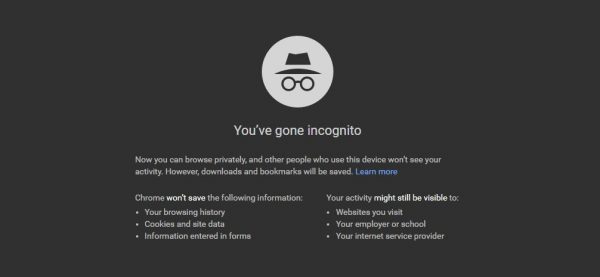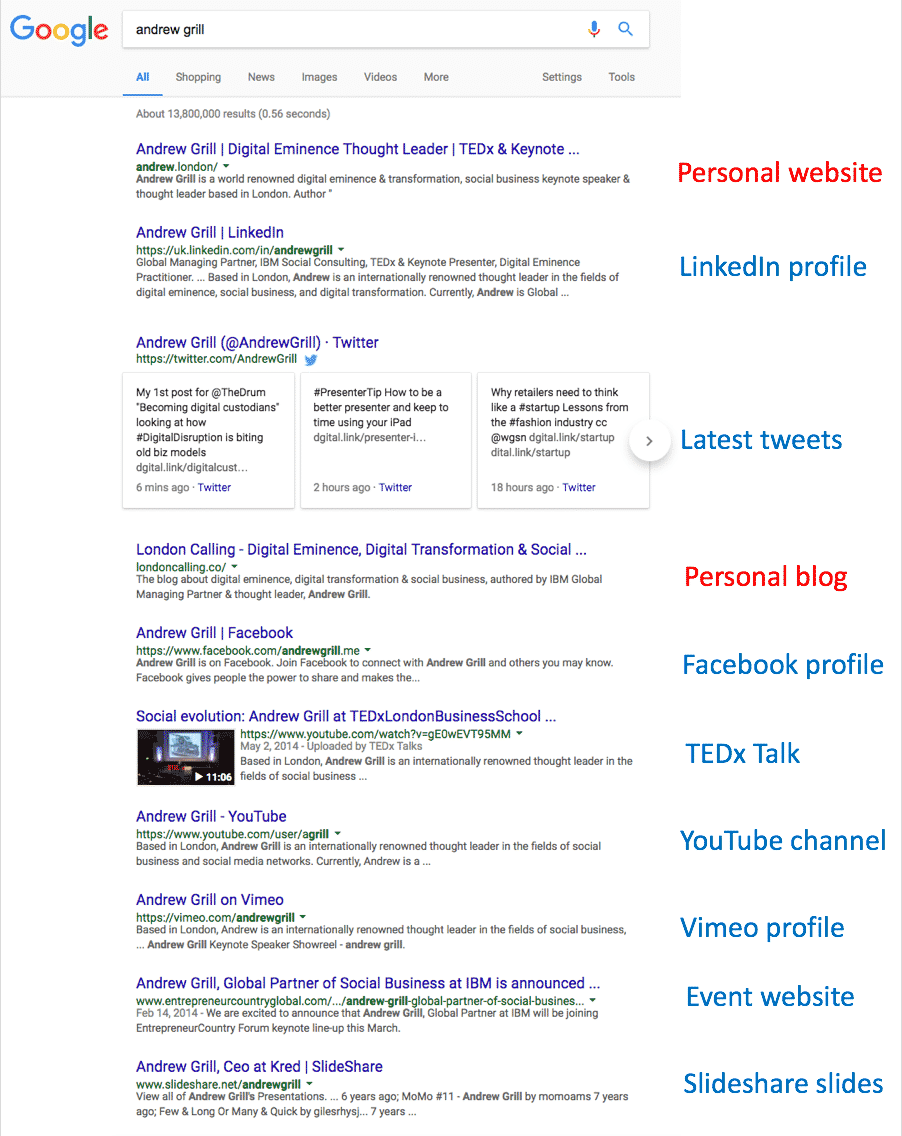When you meet someone for the first time, what is the first thing you do?
Apart from a handshake or other formal greeting, you most probably look at them in the eye, perhaps at what they are wearing and if they are smiling or not.
In many cases, we arrive at our first impressions about someone new in the first 90 seconds. In this initial period, the other person has an opportunity to leave a lasting impression on you. Do you continue to speak with them, or make excuses and find someone else to talk to?
We take great care to form a great first impression in real life, but do we also consider our digital first impression?
In many ways, this is even more important as people can “meet you” digitally before you meet in person.
Analogue networking

I’ve been networking at events all my adult life, and before that I watched my father do this at events we went to. When I provide career advice to students at universities and schools, I speak about how much easier it is to network today, and how I and others had to do it the old-fashioned, “analogue” way before LinkedIn and Twitter were invented.
Now people can form a first impression about you before you even meet in person.
I am fortunate to meet many senior business leaders from around the world, and I often ask them a probing question when we first meet “What was the first thing you did when you saw my name listed for this meeting?”
“I googled you” is the most frequent reply, with some adding that they also looked me up on LinkedIn.
So I know first-hand that my digital first impression is exactly that – the very first impression they have of me.
I know that I have just 90 online seconds to make that impression count – and so do you.
So what happens when a client “googles you”.
Try it yourself, but make sure you use “incognitio mode” on Google Chrome, also known as “private mode” on Safari for Mac, iPhone and iPad and on Firefox to see what they will see otherwise your recent searches will skew the results.

This is what happened when I googled my name on the 28th of December 2016 (the annotations are mine).

You can see that I “own” the front page of Google for a search on my own name. Now as I am not the only Andrew Grill in the world this has been no mean feat since I set up “andrewgrill.com” in 1999 and started to care about my digital footprint. I am also lucky that my name is fairly unique, and hence I can produce content that has my name in it, then search engines do the heavy lifting for me and make it easy to find me and my content.
Let’s do a quick audit on what that first page (no one will go past page one looking for you for a name search) tells the world about me, and how you can have this work for you also.
The first result is one of my two “owned” properties in that I have full control over what is there. I own my domain name, and I host my own website on my own server. In this way, I have full control of the content and how it is displayed. In this instance, this is the site I want clients to see first as it shows off my business credentials and lists what I do and my achievements.
LinkedIn and Twitter are next. Those who have seen me present at conferences know that I often ask for a show of hands as to who is on Twitter. Even if you don’t think you have much to tweet, as this example shows, by being active on Twitter not only is it shown at number 2 on the list, it also shows my latest 3 tweets. For this reason, I need to also ensure that my social media content is up to date and relevant (you can read more about my content strategy here).
Being on LinkedIn is a no brainer for anyone in business that wants to be found, or deals with clients. I have a whole LinkedIn strategy as well, and this involves ensuring rich and relevant content is shown there also. Being on LinkedIn also means that Google does its work and the top 3 links are mine.
In fourth place is my blog which you are on now, which again I own and host all the content. A prospective client can see I publish my thought leadership here, and they can quickly find my recent posts.
At number 5 is Facebook. I don’t really use Facebook that much, and only publish a small amount of my work-related content there, but as we can see, Google is again doing its job and surfacing content that is about me (and thankfully it’s me and not any other Andrew Grill).
For reasons I will elaborate on later, if you are on Facebook, you need to assume a client will see whatever you put there.
Therefore you need to think about your digital first impression across ALL platforms, not just the more business-related ones.
The next 3 results are videos, which makes sense as I am a keynote presenter and part of my digital first impression is the ability to “see” me in action via video. I am thrilled that my 2014 TEDx talk at London Business School, hosted on the TEDx YouTube page is there for all to see.
Next listed are my YouTube and Vimeo video pages respectively, each showcasing my public speaking skills.
Rounding out the first 10 results is a link promoting a talk I gave at the Royal Institution (ticked off my bucket list with this one) for Entrepreneur Country in 2014, and then a slide deck I put together when CEO of online influence network Kred.
Your online strategy drives your digital first impression
Having a broad content strategy, across multiple owned and public platforms means that my digital first impression is hopefully one that can secure me a meeting with a potential or existing client. They research my background and make that first in-person meeting much more rewarding.
Anyone can use this same strategy, but you need something credible to say, and you need to say it across as many platforms as makes sense. People won’t always go directly to your own website (unless you encourage them to do so on your business card or email signature) so you need to make sure your name is associated with what you want to be known for, and your areas of expertise.
This brings me to my final point for this post on digital-first impressions – the balance between your “public” and “private online personas.
I have some shocking news for you on this..
When you put your private life online it is no longer private
Recently I gave a career talk at a High School in London as part of my involvement in the charity Speakers for Schools.
 Speakers for Schools is a UK charity launched in 2011 helping state schools inspire their students and broaden horizons through access to the insights, experiences and expertise of the UK’s leading figures through free talks and more — at no cost to the school.
Speakers for Schools is a UK charity launched in 2011 helping state schools inspire their students and broaden horizons through access to the insights, experiences and expertise of the UK’s leading figures through free talks and more — at no cost to the school.
In front of more than 100 6th formers (16-year-olds in one of their final years of high school), I explained that as a potential employer, I would not hire someone if I searched their name and all of their drunk party pictures came up from Facebook. You can watch the presentation below in full, where I also provide some personal branding tips.
I had a number of questions about this in the Q&A section, and a couple of students also quizzed me via email and Twitter direct message after the talk.
They could not see the link between what they did “in private” affecting their suitability for a job.
The bombshell I dropped was that when you share what you do in your own private time online (even with tight security settings), it is no longer private. You have published it for all to see, including a potential client.
Just as the audit of my google name search above proved, most of my social networks, even Facebook appeared linked to my name. I know of employers who as part of their reference checks look at social media as an indication of a candidate’s suitability for a role.
 If you are reading this and have pictures that you would not want an employer to see, time to hit the delete button. Store them on an external hard drive that you own, not one owned by Facebook.
If you are reading this and have pictures that you would not want an employer to see, time to hit the delete button. Store them on an external hard drive that you own, not one owned by Facebook.
When I mention the need to be careful about what you post online to Gen Y and Gen Z audiences, I always get the pushback that there is “nothing wrong” with posting pictures of yourself at a party, or having fun with friends. I always agree with these statements – there is nothing wrong at all, but you need to also consider if these pictures contribute to that 90-second digital first impression.
The impression you present online can have ramifications beyond your own personal brand
If I can see a picture of you drunk at a party, then my client, putting your name into Google can do the same when they are checking out the A-list team I have put together to work on their top-secret project. If they get a bad first impression from this digital “first meeting”, then they will think poorly of my judgement in putting your name forward, and of my firm. Publishing photos online is just that – publishing for all to see.
This is why it is imperative that you audit and evaluate what digital-first impression you are sending to the world, because now more than ever, your digital first impression matters.

